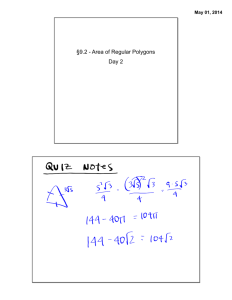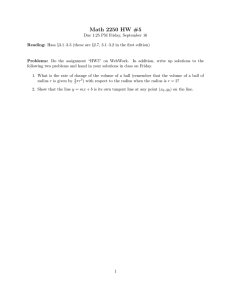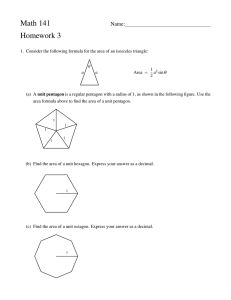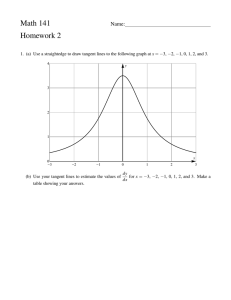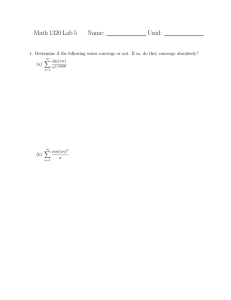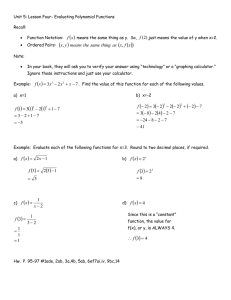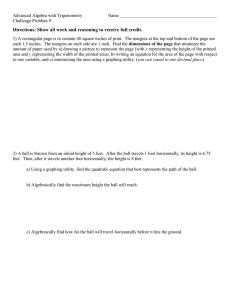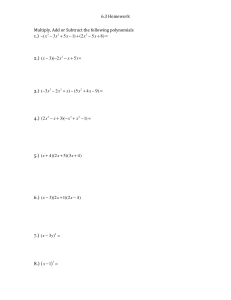Math 141 Homework 2 Name: a
advertisement
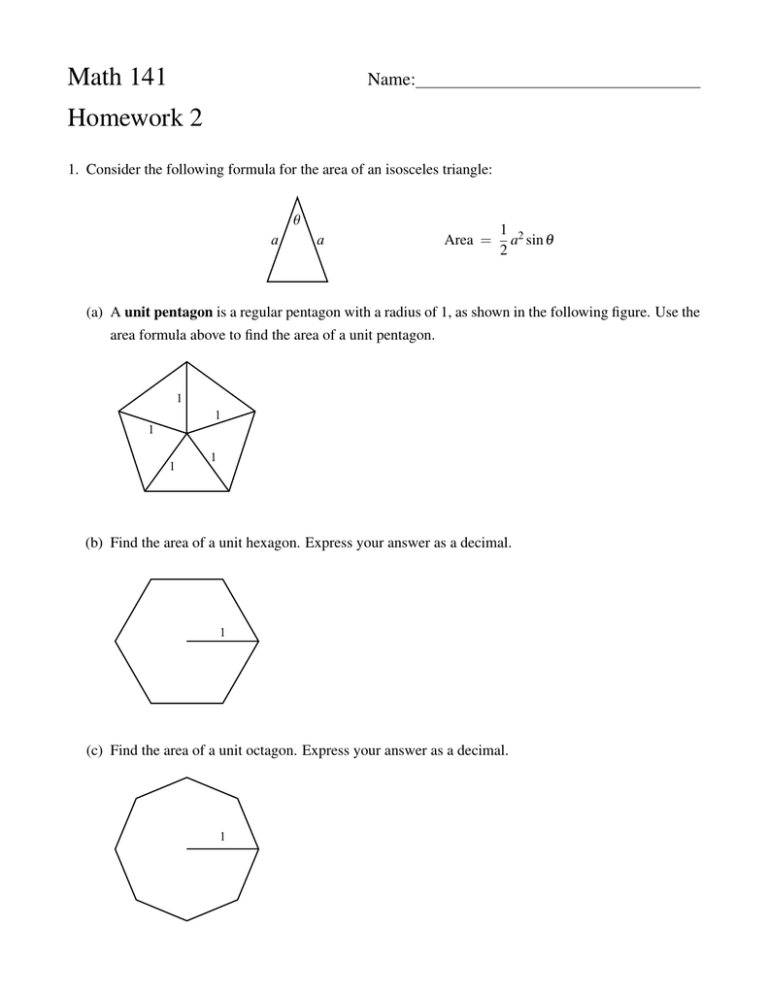
Math 141 Name: Homework 2 1. Consider the following formula for the area of an isosceles triangle: Θ a a Area = 1 2 a sin θ 2 (a) A unit pentagon is a regular pentagon with a radius of 1, as shown in the following figure. Use the area formula above to find the area of a unit pentagon. 1 1 1 1 1 (b) Find the area of a unit hexagon. Express your answer as a decimal. 1 (c) Find the area of a unit octagon. Express your answer as a decimal. 1 Let f (n) be the area of a unit polygon with n sides. (d) Find a formula for f (n). Make sure to check that your formula is consistent with your answers to parts (a), (b), and (c). (e) Make a table of values for f showing f (10), f (100), f (1000), and f (10,000). Based on your table, what is the value of lim f (n)? n→∞ (f) Give a brief geometric explanation for your answer to part (e). 2. Consider the following sum: 1 1 1 1 + + + + ··· 2 4 8 16 The first term is 1/2, and each successive term is half as big as the previous term. For example, 1/4 is half of 1/2, and 1/8 is half of 1/4. The sum goes on forever, with infinitely many terms. (a) List the denominators of the first ten terms. (b) Let g(n) be the result of adding together the first n terms. For example, g(1) = 1 , 2 g(2) = 1 1 + , 2 4 and g(3) = 1 1 1 + + . 2 4 8 Make a table showing the value of g(n) for n = 1, 2, . . . , 10. Express your answers as decimals. (c) Based on your answer to part (b), what would the result be of adding together all of the terms? Explain. 3. A heavy metal ball is placed into a tin can, and then liquid is added until the top of the ball is just barely covered: cylindrical can ball liquid 2 in. The can is a cylinder with a radius of 2 inches, and the ball is a sphere of radius r. (a) Compute the volume of liquid in the can when r is 0.5 inches. (b) Find a formula for the volume V of liquid in the can as a function of r. Make sure that your formula is consistent with your answer to part (a). (c) Use the following axes to draw a careful graph of V as a function of r. Feel free to use a graphing calculator or computer to help you with this part. PRACTICE SPACE 25 20 V Hinches3 L V Hinches3 L 20 15 10 5 0 FINAL ANSWER 25 15 10 5 0 0.5 1 r HinchesL 1.5 2 0 0 0.5 1 r HinchesL 1.5 2 (d) Explain geometrically why the volume V is initially increasing. (e) Explain geometrically why the volume V decreases for larger values of r. (f) Use a graphing calculator or computer to find the value of r that requires the maximum amount of liquid. Your answer should be correct to within 0.01.
